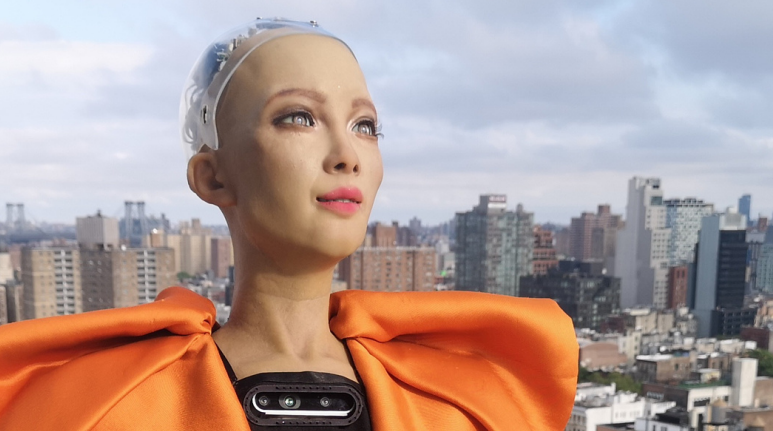Sophia, the world’s most famous humanoid robot, has captivated the world with her lifelike appearance and advanced artificial intelligence capabilities. Created by Hong Kong- based Hanson Robotics, Sophia represents a significant leap in the development of AI and robotics, offering a glimpse into the potential future of human-machine interactions.
The Birth of Sophia
Sophia was unveiled to the world in 2016, and her creation marked a remarkable achievement in the field of robotics. Designed to resemble Audrey Hepburn, Sophia’s face is remarkably human-like, featuring expressive eyes, realistic skin texture, and a full range of facial expressions. These features are made possible by a patented rubber material called “Frubber,” which mimics the elasticity and texture of human skin.

Artificial Intelligence and Machine
Learning Sophia’s true power lies in her advanced AI and machine learning capabilities. She is equipped with cameras and sensors that allow her to perceive and interpret human facial expressions, eye contact, and body language. These sensors enable her to engage in conversations, respond to questions, and even recognize and remember individual people.Sophia’s AI is continuously evolving.
She learns from interactions with humans, becoming more adept at understanding context, recognizing faces, and engaging in natural conversations. This adaptability and learning ability are at the forefront of AI development, making Sophia a pioneer in human-robot interaction.
Applications and Uses
Sophia’s creators envision a wide range of applications for her technology. While she is primarily known as a public figure and speaker, she has been used in various fields, including customer service, education, and healthcare. For instance, she can assist in providing information at events, deliver presentations, and serve as an AI tutor to help students learn and understand complex subjects.
In the healthcare sector, robots like Sophia can play a role in patient care, monitoring vital signs, providing companionship to the elderly, and assisting with therapeutic treatments.
Ethical and Philosophical Considerations

Sophia’s existence raises important ethical and philosophical questions about the future of AI and robotics. Some argue that granting robots human-like appearances and capabilities can lead to blurred lines between humans and machines, potentially raising concerns about identity and empathy.
Additionally, there are concerns about the impact of advanced AI on the job market, as robots like Sophia have the potential to perform tasks traditionally carried out by humans. These questions underscore the importance of responsible AI development and thoughtful consideration of the ethical implications.
Sophia the Robot is a remarkable technological achievement that showcases the incredible progress made in the field of AI and robotics. While she is a captivating and influential figure today, her existence also prompts important discussions about the future of technology, ethics, and human-robot interactions.
Sophia serves as a reminder that as AI and robotics continue to advance, it is crucial to approach their development with care, responsibility, and an understanding of the ethical complexities they bring. She represents both the potential and the challenges of integrating AI into our lives, and her continued evolution will undoubtedly shape the future of human-robot relationships and the role of technology in society.
